8 PPC Ad Copywriting Secrets that You Can Steal from Our Top Experts
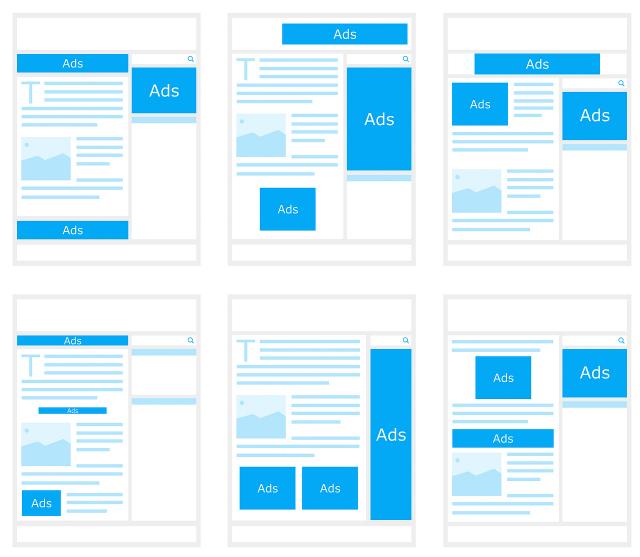
Ever had that feeling that an ad is reading your mind? That the offer matches your current needs uncannily well? If so, you have witnessed excellent PPC ad copywriting firsthand.
AdWords and Facebook ads come with a ton of bells and whistles. It takes years to say you truly master either of these platforms. And even then you have to keep on learning because they are constantly changing.
However, there is one constant. No matter how good these tools get and how much they help marketers reach the right audience, if your PPC ad copywriting sucks, so will your results.
Ay Idunn, we write copy for PPC ads on a daily basis, either as part of our social media management and marketing service or as part of our AdWords management service. Yes, we rely a lot on landing pages and excellent graphics or videos.
But in all our tests, it was ultimately the copy that made the difference in CPC, leads generated or even brand awareness.
I’m not going to talk about PPC ad copy best practices. You can easily find out about them when Google or Facebook ban your ads. A few quick notes:
- Always use keywords in your PPC ad copy (I’m amazed at how many marketers forget about this very basic thing).
- Mind the text-photo ratio on Facebook. You can test it here.
- Follow the policy on every platform (yOu cAn’T wRiTe lIkE tHiS, for instance)
Again, these are just a few basic recommendations. I’m rehashing them here to save you time – if you don’t follow them, your ads won’t run. But you will get a chance to fix them, so all you lose is time.
Now let’s get down to real business!
8 PPC Ad Copywriting Tips to Boost the ROI of All Your Campaigns
No one clicks on an ad just because it’s cool. [Well, marketers do. But that’s beside the point.] When you click on an ad, you do it because you need what it’s offering and because “it spoke to you”. Let’s see how you can leverage this into your PPC ad campaigns.
-
Target Your Neighbors First
If your business is a local one, don’t forget to add the name of your city in the copy. Heck, if it’s a bakery in a large city, go even further and use the name of your neighborhood or street.
This strategy doesn’t just apply to restaurants, pubs and other similar businesses. Since Hawk, the 2017 Google local algorithm update, users receive results based on their current location.
Plumbers, lawyers, dentists, schools – all of these services become more relevant if the user can easily see your location.
Take a look at the AdWords results for “new York lawyer”.
The top one asks bluntly: “Do you need a lawyer in New York?” Well, of course I do, that’s why I made this search! Is it mind-reading? No, it’s just savvy targeting and PPC ad copywriting.
More importantly, even if your products or services aren’t location-bound, everyone loves to shop locally.
Even if you’re shipping nationally or internationally, you can create a different set of ads for your “neighbors”. For instance: “lovely dresses made right here in Montana” will always beat “lovely dresses – shipping nationally”.
The same goes for B2B ads. Sure, a copywriter or a web designer can work from anywhere. But some clients may still prefer to discuss with them face-to-face. Add your location to one set of ads and see how easily it is to outperform all the others.
Main takeaway: leverage some of that local pride we all share. Stick to your peers and they will flock to your brick-and-mortar or even virtual business.
-
Leverage User Intent
User intent is the key to great copy and content. I could go even further and say that user intent should be the foundation of any successful marketing endeavor.
After all, when you know what your user wants and needs, your work is half done.
So how do you leverage user intent in your PPC ad copywriting?
Quite easily: think about your buyer persona, not yourself.
For example, you may be tempted to say you are the best real estate agent in your area. While that may be true, no one really cares.
What your potential customers care about is if you can solve their problem.
Take a look at the AdWords results for “sell my house”.
The second and the third one are basically mirroring my query. They tell me succinctly that I can use their services to sell my home quickly and in any conditions. The fourth one goes even further and addresses a common concern of home sellers – the price.
In other words: move the spotlight from yourself to your customers. Tell them how you solve THEIR problems. The only way to gain their clicks (and credit card number) is to show that you truly understand them.
Main takeaway: don’t brag. Be practical and show how you can solve problems.
-
The Less Targeting Parameters the Better
I know what you’re thinking: the more people I target, the likelier someone will bite is.
Not really.
Before you ask how to write PPC ad copy, ask this: who is my PPC ad copywriting meant to get to?
Some of today’s best performing companies are those that can niche down like experts. Heck, you don’t even have to niche down your whole business. Just create different ads for different buyer personas.
For example: would you click on an ad that promotes “pretty dresses for everyone”? Really think about this one – do you want to be like everyone?
Why not target people based on their height, size or even hair color. Red goes great for brunettes.
Better yet, instead of advertising the best running shoes, break down your ads into best running shoes for marathons, best running shoes for beginners and best running shoes for trail circuits.
This way, you make sure that your ad only gets clicked by people who are ready to buy aka those who match your buyer persona profile to a T.
Why waste money on targeting people that won’t become your customers? Don’t assume that they may at some point. It’s more likely they will get annoyed with the lack of relevance and never click on your ads or links again.
Think about narrowing your target audience when you set it up AND when you write the copy for your PPC ad campaign. After all, your tone of voice and choice of words have to match the target audience, right?
Main takeaway: give the gift of relevance and target only those people who are likely to become customers or leads. Don’t annoy the others and don’t waste money on irrelevant clicks or impressions.
-
Numbers or Statistics Are Your Best Friends
Do you know what everyone wants? Speed. Time for themselves instead of time spent sifting through walls of copy to get to the price.
So help them get that time back.
You see, most people already know how much they are willing to pay for a product or service. Better yet, depending on their income, they might consider your product too expensive or too cheap to be of quality.
People have their own standards. Of course, they will compare prices and features before pressing “buy”. But you can make their life easier by clearly displaying your prices in the ad copy.
This will also help you not waste money on clicks that are irrelevant aka clicks from people who deem your products to be too expensive or too cheap.
Main takeaway: add prices to your ad copy to filter out people who will never buy from you anyway and to make everyone’s life easier.
-
Make Your Value Proposition Your Star
But again, focus on the problems it solves, not on your excellent team or on your status as industry leader.
The best CTAs are clear from the very beginning. They don’t take whole paragraphs to tell a simple point of difference. One of the best PPC ad copy tips is keep it short!
Anyone can write thousands of words to explain the benefits of a product or service. But only the most skilled ad copywriters can make those benefits shine in a couple of lines.
Here are some great examples.
I’m always looking for new keyword research tools and I always appreciate when the PPC ad copy makes their point of difference clear from the very beginning.
I need to know whether a tool is best for researching keywords for my own content or for spying on my competitors’ rankings and keywords. “Find easy-to-rank keywords”, “Improve your PPC and SEO” – both of these are excellent examples of brevity and of trying to match the user intent.
Both those CTAs speak about goals most people looking for keyword research tools have. And, of course, they use the second person to address the user directly.
Main takeaway: let the benefits shine in your PPC ad copy from the very beginning. Be straightforward and use simple words.
-
Consider the Buyer Journey
Not all users are in the same stage of the buyer journey. As a marketer looking to nail your PPC ad copywriting, you need to pay extra attention to this.
The main stages of the buyer journey are:
- Awareness – the user is aware of their need
- Consideration – the user is considering their alternatives i.e. choosing the offer that matches their needs best
- Decision – the user is ready to make a purchase
Of course, you can decide to market your product to people in one of these stages, in two of them or to all. If you choose more than one stage, however, you will have to create different ad copy for each.
Here’s a great example from Moz on how the buying cycle mixes in with keywords.
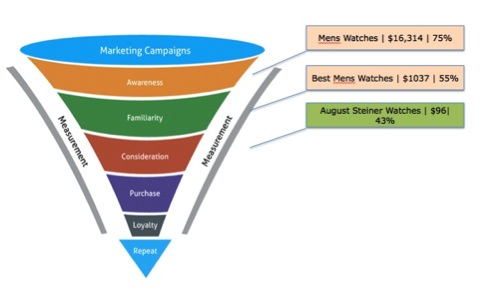 Image via Moz
Image via Moz
PPC ad copywriting for the decision phase is the most straightforward. Your customer already knows what they want. Your job is to convince them to buy from you.
You can leverage your excellent price (see above), your top quality or other perks like free shipping, fast shipping, great customer support and so on.
For the first two phases, you will have to work harder on finding your selling proposition. Even more, you will have to make sure that your landing pages are compelling enough to get people to quickly move from one stage of the buyer’s journey to the next.
Main takeaway: PPC ad copywriting has to mirror the buyer journey stage your customer is in. The ad copy for a buyer in the awareness phase is very different from that for a user in the decision phase.
-
Match Landing Pages with Ads
This one rule that a lot of e-commerce companies are breaking. And it causes havoc and frustration.
Imagine this: you see the perfect man’s watch in a Facebook ad. You want it! You really do! So you click on the link only to get to a page where hundreds of other watches are displayed.
It happened to me with various ads more time than I care to remember. The result was always me closing the page in rage, with one exception: I saw the perfect shoes (yes, I fall for shoe ads easily) in an ad on Facebook. Clicked on the link and was greeted by tons of completely different shoes.
I was patient enough to sift through the first three pages of shoes. Didn’t find the ones I was looking for so moved on. Again, in a rage. Of course, the remarketing algorithm hit me with the same ad over and over again until I blocked it altogether.
Now I understand why you’d want to show off your best, prettiest products in an ad. But when the landing page doesn’t match your photo or your PPC ad copywriting, you’re in trouble.
Customers don’t care for lazy marketers who are too busy to create separate pages for separate products.
Again, respect your customers’ time and don’t have them sift through your huge product base just to find what you were advertising.
Main takeaway: PPC ad copywriting and landing pages are part of the same sales funnel. Make sure they are complementary and speak of the same product. To give the feeling of consistency, you can even use the same headline in both places.
-
Use Psychology to Your Advantage
The two top things you can leverage are the sense of entitlement and emotions.
Let me illustrate that with examples.
First off, would you click on:
“Get liposuction surgery now”
OR on
“Get the body you deserve. Schedule your liposuction.”
I bet you would click on the second one! Everyone feels they deserve better than what they have. How true that is only a psychologist can answer. For us, marketers who write PPC ad copy, the task at hand is to ensure the client feels valued and safe in their choice.
Secondly, would you click on:
“Best raincoats for kids”
OR on
“Keep your kids safe from the rain and healthy. Use X-brand raincoats”
The second one, right?
Main takeaway: find out what makes your audience tick and write ad copy that speaks directly to their needs, problems or wants.
Conclusion
If I were to sum up all these tips in a single one, it would be: get to know your audience. When you know what they need, it becomes a breeze to come up with the PPC ad copywriting that sells it to them.
Equally important: don’t be greedy with your targeting and don’t assume your product is right for everyone. There are very few such products in the world. A very inclusive targeting strategy will only waste you money.
If you need help with crafting the perfect copy for any campaign, our expert PPC ad copywriters are just a click away:

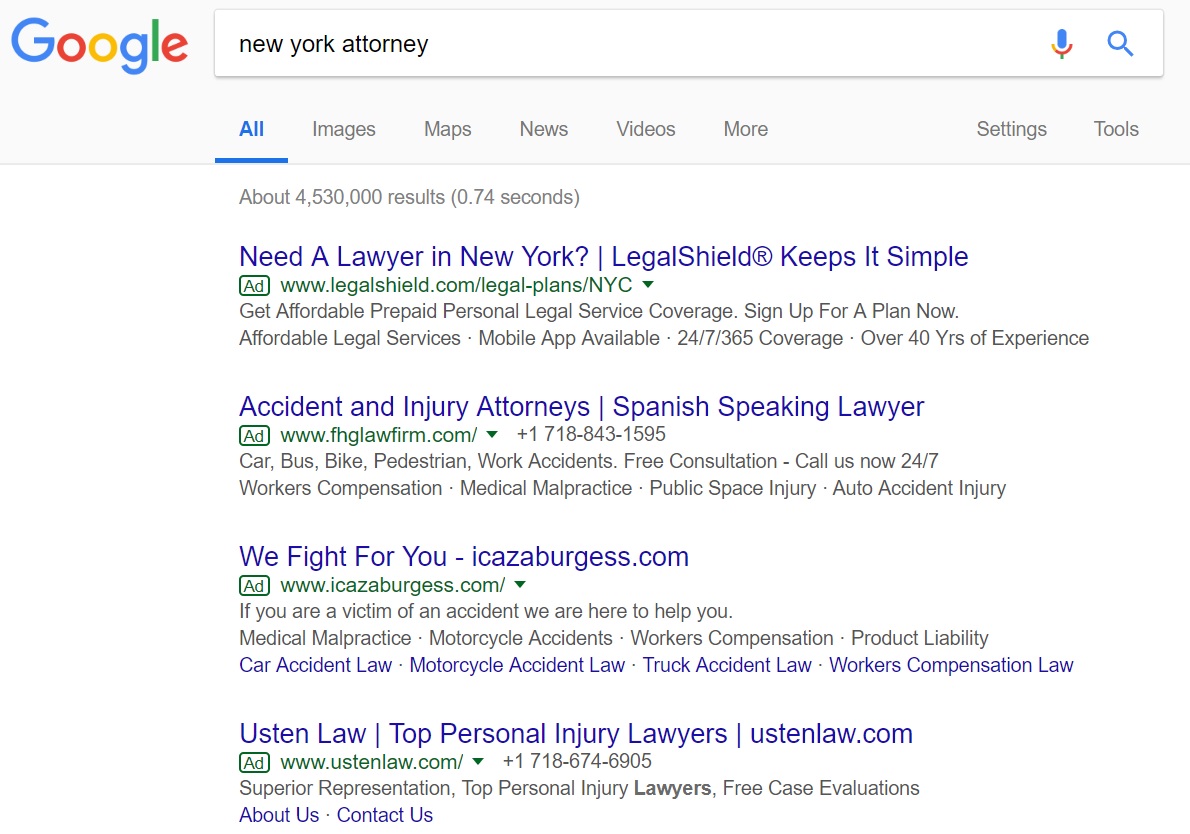
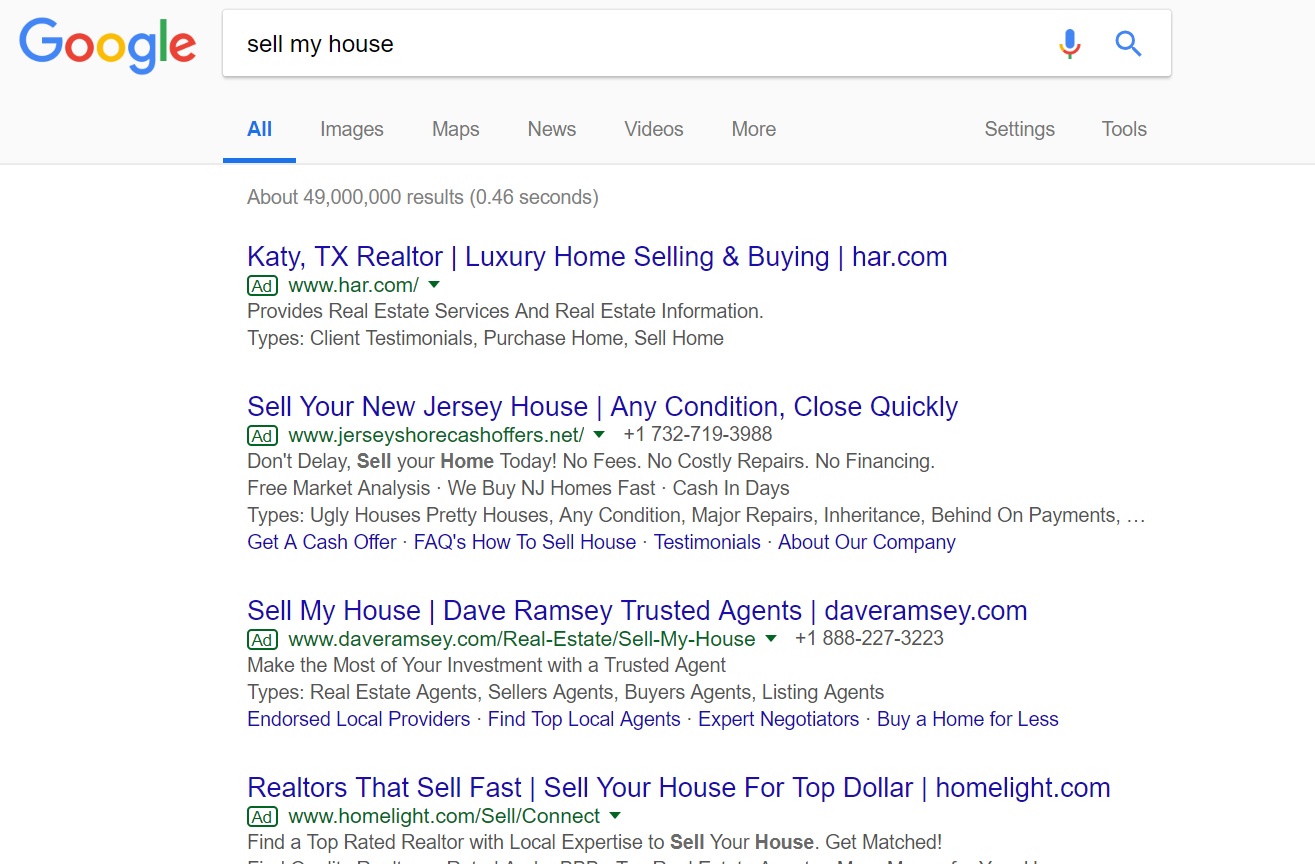
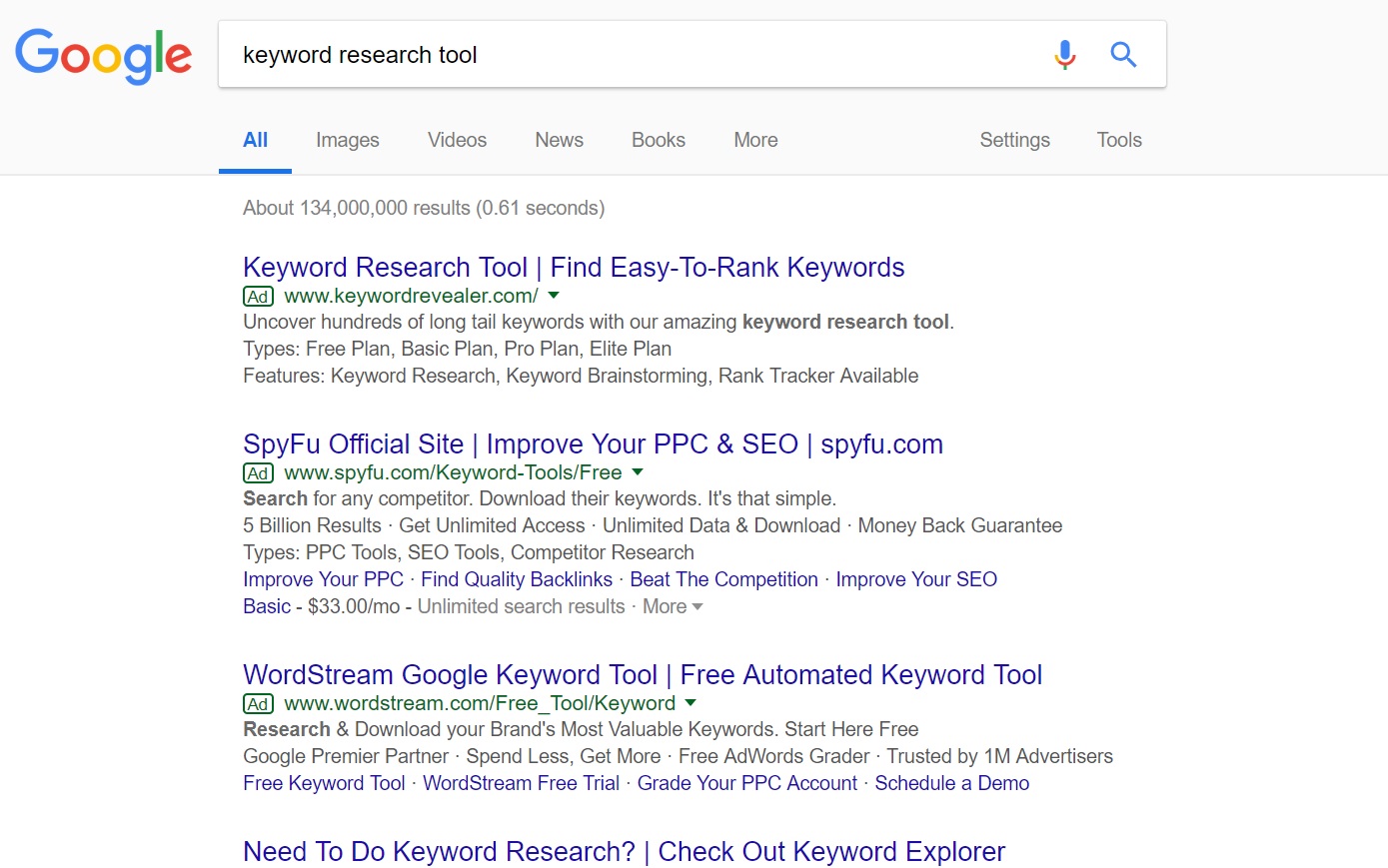

1 Comentariu la “8 PPC Ad Copywriting Secrets that You Can Steal from Our Top Experts”
[…] There are, however, a few criteria to help you make this decision and get the best ROI out of your PPC ads. […]